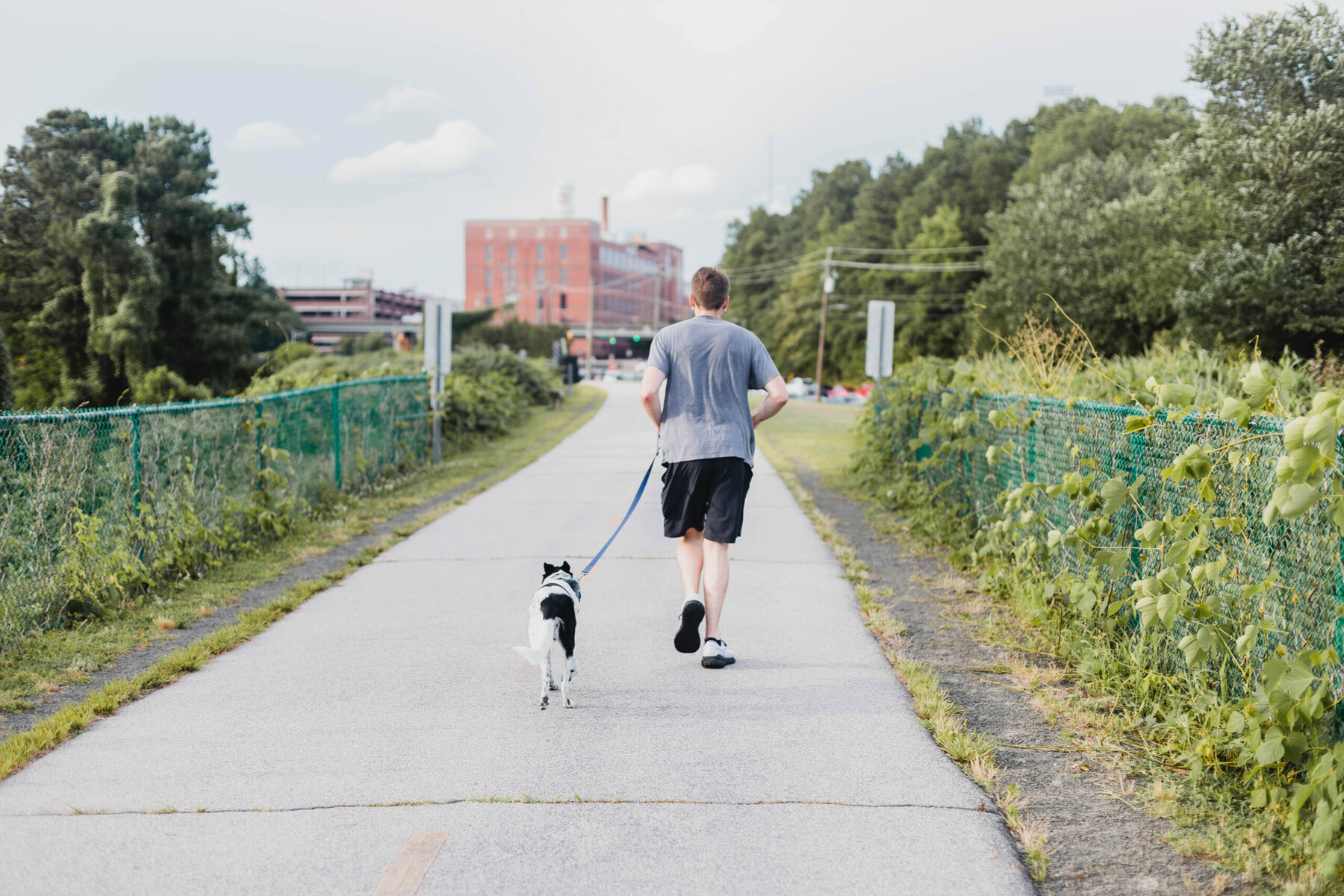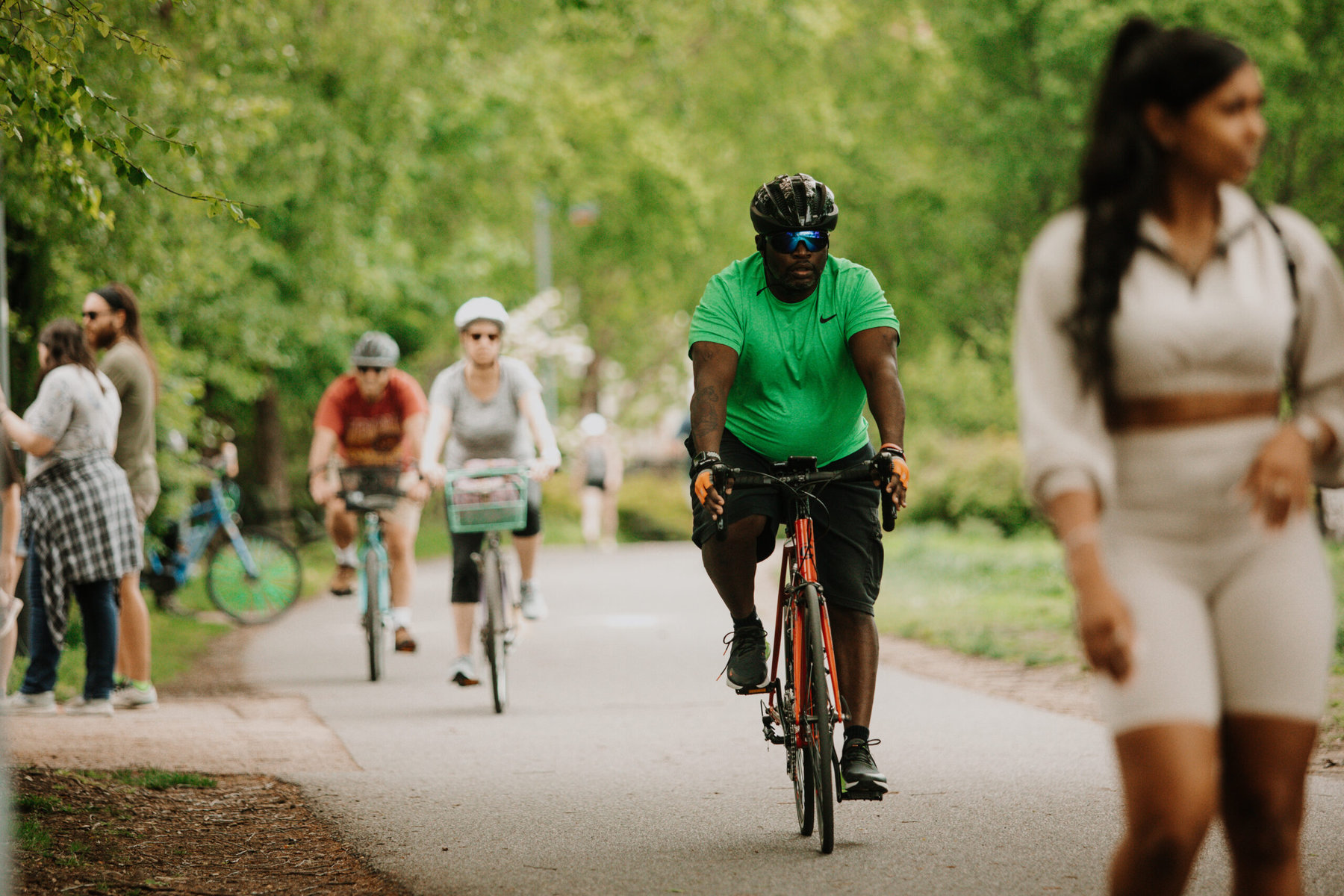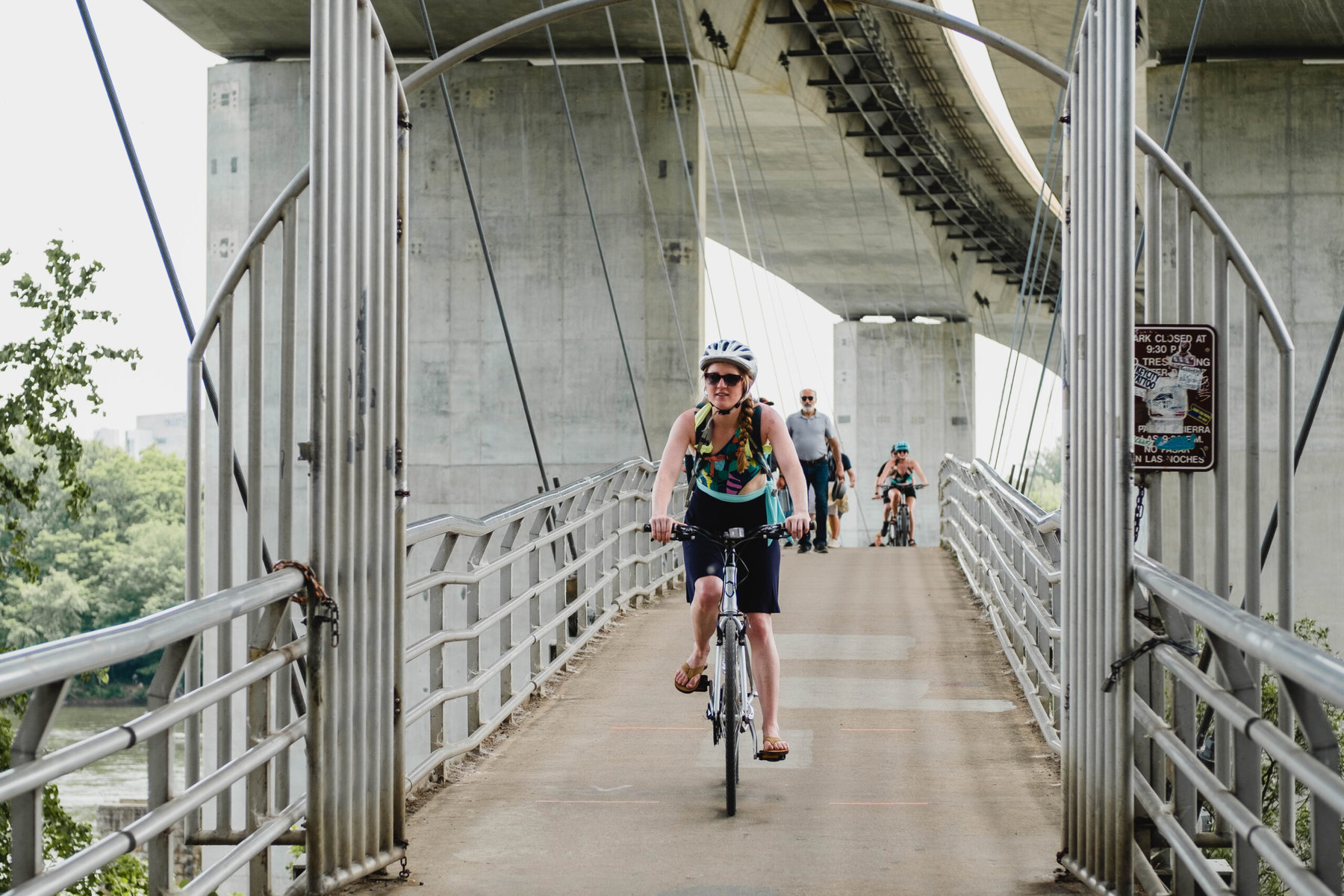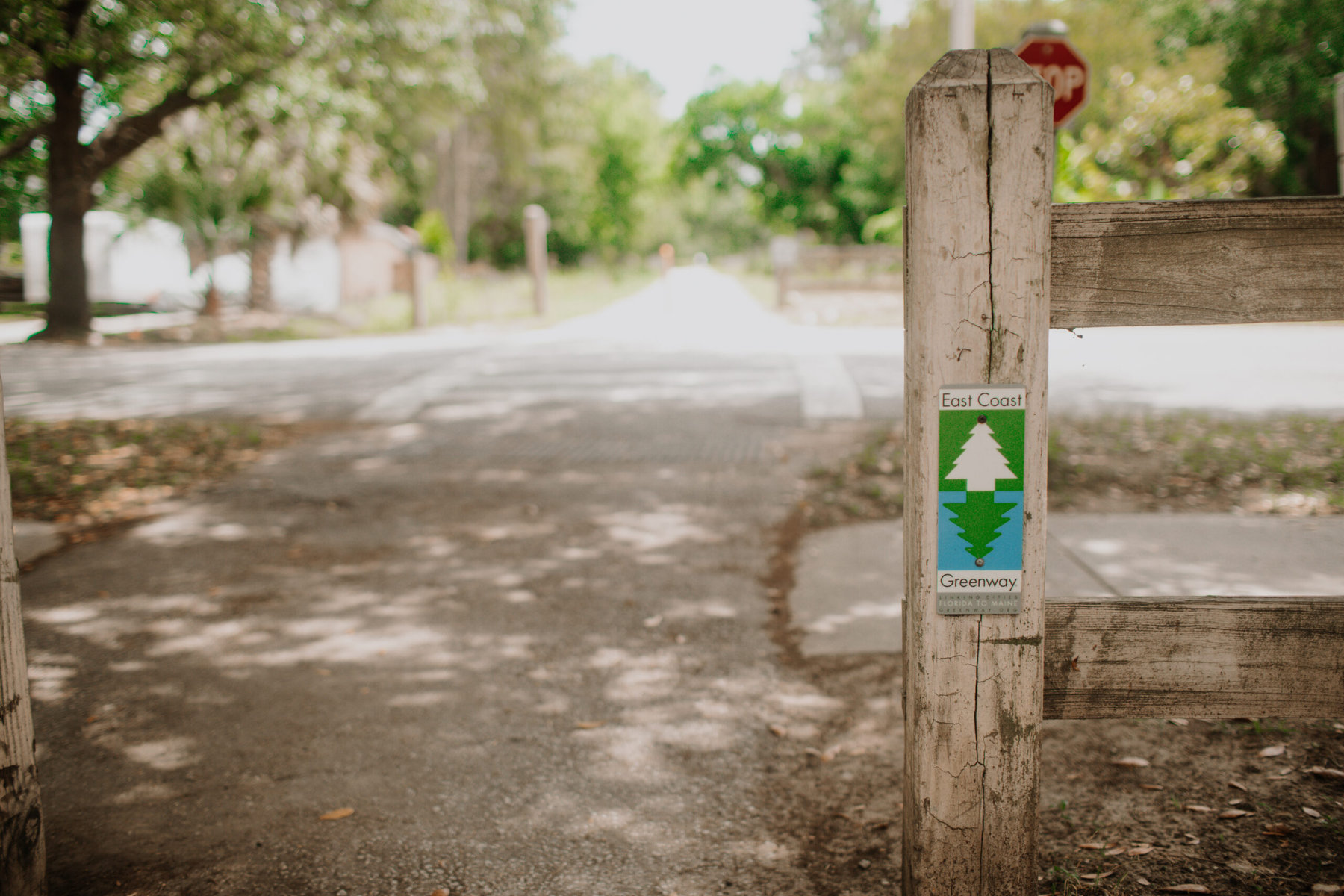When the owners of running store Bull City Running Co. were scoping out a second location in Durham, North Carolina, they set their sights on retail space near the planned Durham Belt Line. Their flagship store already benefits from a spot along the city’s American Tobacco Trail.
“We know that it is good for foot traffic, bike traffic, active living,” co-owner Kim Chapman says, “which is our target market as a running shop — but it also makes it convenient for local races and for our training groups to go on long runs.”
The American Tobacco Trail is just one small stretch of the East Coast Greenway, an evolving network of trails from Calais, Maine down to Key West, Florida. Project leaders at the East Coast Greenway Alliance have been working since 1991 to stitch them together and create new greenways with the goal of establishing a car-free, 3,000-mile route for walking and biking. The Durham Belt Line will add about two more connecting miles to the Greenway’s remaining 2,000 miles. Although it’s a fraction of the path’s full Eastern Seaboard-spanning journey, it will be a critical car-free route for Durham residents on a daily basis.

Greenways can be a simple low-tech solution to complex, intersecting issues. In the face of the climate crisis, transportation remains the top source of emissions for the US. With safe, functional paths, people swap driving for commuting by bike or foot. Greenways also keep people safe from cars. A study of 12 cities found that separated bike lanes were one of the biggest factors in reducing fatalities and injuries for everyone on the road, lowering risk by 44 percent.
Access to trails is also a public health benefit. In Morgantown, West Virginia 60 percent of people surveyed said they exercised more once they started using the city’s trails. Greenways also boost economies. A study of North Carolina’s shared-use paths found every dollar spent on trail construction generated $1.72 in revenue, while also providing health and transportation benefits.
According to the East Coast Greenway Alliance, there are 50 million bike rides, runs and walks every year along the existing route.
“For business owners, for property owners, for the health of the community, there are so many positives that are going to come from this trail,” Chapman says.
Ready for funding
Over the next four years, billions of dollars from the Bipartisan Infrastructure Law could flow to bike paths across the country — and the East Coast Greenway Alliance, which works in collaboration with local cities and towns to build trails along their route, is poised to help communities secure those dollars.
Crushed by negative news?
Sign up for the Reasons to be Cheerful newsletter.The Durham Belt Line was awarded $9 million in federal funding in 2021. The Alliance also helped Charleston, South Carolina secure $18.1 million for a bicycle-pedestrian bridge that will, according to the city’s transportation director, make “over 73,000 jobs accessible within a 20-minute radius and [activate] over 12 miles of greenway.” Construction is expected to start this year.
One of the primary barriers to completing the full East Coast Greenway track is land acquisition: buying the literal ground the path will cover and moving it into public control. Land is more expensive in high-cost real estate markets, but averaged out over the envisioned route, it takes about $2 million per mile to build a greenway path. It would take an estimated $4 billion to build the remaining 1,900 miles, a single percent of the overall infrastructure funding in the federal package.
“We’re trying to help our communities navigate this moment and see the potential,” says Dennis Markatos-Soriano, the Alliance’s director.
Connecting the path
The paths that have been built along the East Coast Greenway have already transformed many former industrial areas and abandoned railway tracks into community hubs.
The trail along the Schuylkill River in Philadelphia’s Center City is now “a refuge,” as the Alliance’s Mid-Atlantic Manager Daniel Paschall puts it. That wasn’t always the case. When the Schuylkill River Development Corporation initially envisioned a park along the riverbank, it was isolated by highway traffic and train tracks and choked with trash. The nonprofit started as a group of neighbors and has since worked with the Alliance to secure funding and continue to connect segments of the path.

Joe Syrnick has been the president and CEO of the Corporation for nearly 20 years, but when the trail was initially built, he was the chief engineer and surveyor with the city’s Streets Department, designing and overseeing its construction.
“People were yearning for open space,” he says. “Once the trail was under construction, literally the next day people were out running around the bulldozers. It didn’t take long to figure out this was going to be successful.”
By bringing people closer to the river, the completed portions of the route have also brought attention to cleaning up along the waterway. The Corporation coordinates regular trash pick ups, and they’ve been a part of bigger systemic changes, like restoring habitat along the riverbanks with native plants and trees.
“It’s seeding a long-term effort to help rebalance everything,” Paschall said. “Obviously it doesn’t happen overnight, but that’s the kind of thing happening up the Delaware River and along the East Coast Greenway.”
He’s seen similar transformations unfolding along waterfront trails in Wilmington, Delaware, and Trenton and Camden, New Jersey. According to a 2019 analysis of the impact of the Greenway in the Delaware River Watershed, the environmental benefits in the region add up to $39 million. The analysis takes into account factors like the carbon sequestration and air pollution removal provided by plants along the greenway.

Philadelphia has seen economic growth along the path, too. Syrnick cites commercial and residential building developers that chose their location because of the river trail. A recent bridge was built from the children’s hospital to the trail so employees can take a break in green space.
Such development can have a negative side effect. Absent intentional planning, greenways increasing nearby property values in the US has led to displacement of longtime residents. That unwanted outcome is top of mind at the Alliance, says Markatos-Soriano, who believes that scale is one way to address that concern.
“If it’s something that people love and it’s rare, the price is gonna go way up,” Markatos-Soriano said. “We want to flood the market. We want more greenways for all.”

An inclusionary trail planning toolkit by the Alliance team and the Pennsylvania Environmental Council outlines best practices for centering community needs, including maintaining affordable housing along trails.
And though Chapman is a business owner who stands to benefit from the Greenway, the path is not only about the bottom line. She’s excited for the ways the trail will enable exercise, both for her own family and for the run clubs that Bull City Running leads, and generally improve quality of life for the city’s residents.
“With all the growth in downtown Durham in the last 10 years, one of the things I feel hasn’t been given enough attention is enough green space,” Chapman says. “People stop off the trail for a drink of water, to use the bathroom, to borrow an air pump for tires, to pick up a snack for the rest of their ride. Even if it’s not directly a business transaction, we have always tried to create a community space as much as a business space.”







